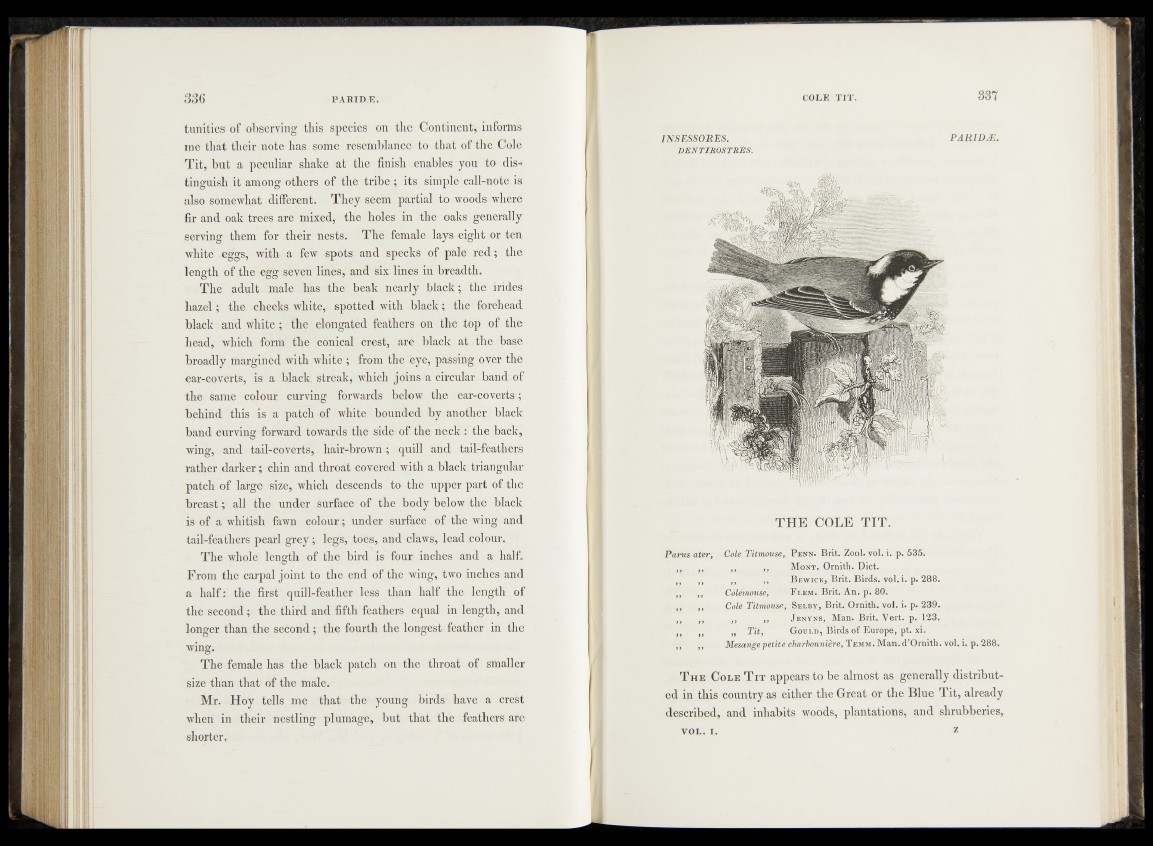
tunities of observing this species on the Continent, informs
me that their note has some resemblance to that of the Cole
Tit, but a peculiar shake at the finish enables you to distinguish
it among others of the tribe ; its simple call-note is
also somewhat different. They seem partial to woods where
fir and oak trees are mixed, the holes in the oaks generally
serving them for their nests. The female lays eight or ten
white eggs, with a few spots and specks of pale red; the
length of the egg seven lines, and six lines in breadth.
The adult male has the beak nearly black; the irides
hazel; the cheeks white, spotted with black; the forehead
black and white; the elongated feathers on the top of the
head, which form the conical crest, are black at the base
broadly margined with white ; from the eye, passing over the
ear-coverts, is a black streak, which joins a circular band of
the same colour curving forwards below the ear-coverts;
behind this is a patch of white bounded by another black
band curving forward towards the side of the neck : the back,
wing, and tail-coverts, hair-brown; quill and tail-feathers
rather darker; chin and throat covered with a black triangular
patch of large size, which descends to the upper part of the
breast; all the under surface of the body below the black
is of a whitish fawn colour; under surface of the wing and
tail-feathers pearl grey; legs, toes, and claws, lead colour.
The whole length of the bird is four inches and a half.
From the carpal joint to the end of the wing, two inches and
a half: the first quill-feather less than half the length of
the second ; the third and fifth feathers equal in length, and
longer than the second; the fourth the longest feather in the
wing.
The female has the black patch on the throat of smaller
size than that of the male.
Mr. Hoy tells me that the young birds have a crest
when in their nestling plumage, but that the feathers are
shorter.
INSESSORES. PARIDÆ
E ENTIROSTRE S .
S i
j
1
.i i
0 t. > lifts! I , H 1
Mi 4 : :
M M E lH B H P n i
fm\
4* ’’
Parus ater,
T H E COLE T IT .
Cole Titmouse, P enn. Brit. Zool. vol. i. p. 535.
,, ,, M ont. Ornith. Diet.
,, ,, B ewick, Brit. Birds, vol.i. p. 288.
Colemouse, F lem. Brit. An. p. 80.
Cole Titmouse, Selby, Brit. Ornith. vol. i. p. 239.
„ , J enyns, Man. Brit. Vert. p. 123.
„ Tit, G ould, Birds of Europe, pt. xi.
Mesangepetite charbonnière, T emm. Man. d’Ornith. vol. i. p. 288.
T he Cole T it appears to be almost as generally distributed
in this country as either the Great or the Blue Tit, already
described, and inhabits woods, plantations, and shrubberies,
VOL . I . z